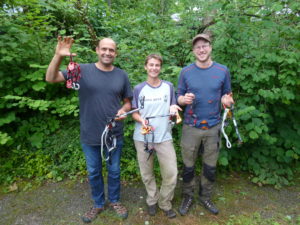Project LongTIme
August-september 2018
Nouragues Natural Reserve – French Guiana
1- French Guiana
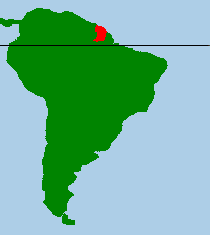
French Guiana is an overseas department and region of France, on the north Atlantic coast of South America . It borders Brazil to the east and south and Suriname to the west.
With a land area of 83,534 km2 and 280 000 inhabitants living along the coast , French Guiana is recoverd by 90% of tropical rainforest .
2 – Nouragues Natural Reserve

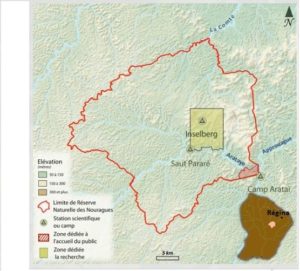
The Nouragues national natural reserve protect more than 105 000 ha of tropical rainforest and is the second biggest french natural reserve.
Because of its size and location, the Nouragues Reserve occupies a strategic place in the protection of the tropical rainforest at national and European level. Its fauna, its flora, as well as the mosaic of environments encountered make it an exceptional site, considered as a high place of biodiversity and a reference at the international level.
Isolated, the reserve is accessible only by pirogue, up the Approuague river and Arataye river .
The trip requires between 3 and 5 hours from the town of Regina, but access to the reserve is currently prohibited to the public.
3 – CNRS research station
The Nouragues Ecological Research Station is a scientific station managed by Centre National de la Recherche Scientifique ( National Scientific Research Center). It is located at the heart of a tropical rain forest, in the Nouragues Natural Reserve, French Guiana. It is a privileged equipment for the study of the functioning of tropical forests and their biodiversity.
The Station welcomes scientists in any discipline from all over the world.
The nouragues station is organized around two ermanent camps ( saut Pararé and Inselberg), 8km away from each other. These two sites are equiped to welcom scintists from a few days to several mounths. traditional housing places ( “carbets” – hammock sleeping) are available at both camps, as well as electricity, fridges, ans drinkable water.
Communication with the outside is possible by satellite phone or by satellite internet.
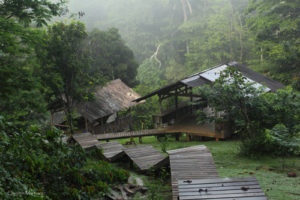
4 – LongTIme Project – LONG Term Impact of ancient AMErindian settlements on Guianese forests
A growing body of archaeological and pedological evidence, accumulated since the 1990s, suggests that Amazonian rainforests might have been much more densely occupied and intensely modified by Amerindian societies before the First Contact than previously thought. These discoveries, by challenging the very existence of “pristine” tropical rainforests, have forced ecologists to consider pre‐industrial human activities as one of the potential drivers influencing biodiversity of Amazonian rainforests. Indeed, several case studies in central and western Amazonia have already confirmed that the impact of ancient Amerindian societies is still locally perceptible in soil and forest composition. Such studies are, however, rare in French Guiana, notwithstanding the presence of all the required skills in both human sciences (archaeology, anthropology, ethnoecology) and environmental sciences (ecology, forestry, pedology).
The LongTIme project will build on the skills of several complementary scientifis teams including Amerindian experts, to evaluate the influence of past Amerindian societies on present day soils and forest structure, composition and diversity across various temporal and spatial scales. Based on their respective experience and available datasets, they will implement specific protocols for a combined landscape‐scale evaluation of the intensity of past human occupation and of the impact of this occupation on soils and biodiversity patterns.
LongTIme will contribute to a better understanding of biodiversity patterns in French Guianese rainforests and thus provide key elements for environmental policy makers and for the modeling of forest changes in response to future land use and climate changes.
The LongTIme project, funded by LabEx CEBA
and the Regional Archeology Service, is a historic/ecology project. One of its objectives is to understand the influence of pre-Colombian human settlements on the plant formations currently observed in Nouragues, in a forest that was long perceived as primary, and today protected by a natural reserve. A part of the study will be done near saut Pararé where the remains of a crowned
mountain have been identified during LiDAR aerial imagery campaigns.
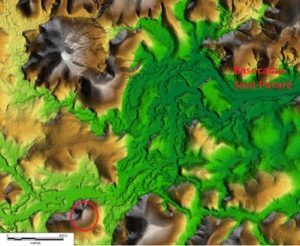
5- Synusia climbers
Synusia Climbers is a team of professionnal arborist working in different parts of the world and offering a quality service in the access to the treetops for scientific research.
Three professional arborist, Valentine Alt from French Guiana, Valentin Dresely from Germany and Kike Castro from Spain are part of the team. Using the most advanced techniques, they are totally respectfull with the trees and the environment. With a long experience of tree climbing, they provide maximum safety and gentle treatment of equipment and samples.
Synusia climbers have been contacted by LongTime project to help them on the botanical part of the project.
In august 2018, the three tree climbers will spend 15 days in the Nouragues reserve to sample 150 trees spread over 3 plots located on the LongTIme research area ,1 km far from the camp.
Thanks to Drayer, Courant et ISC for the gear they offered for this project
